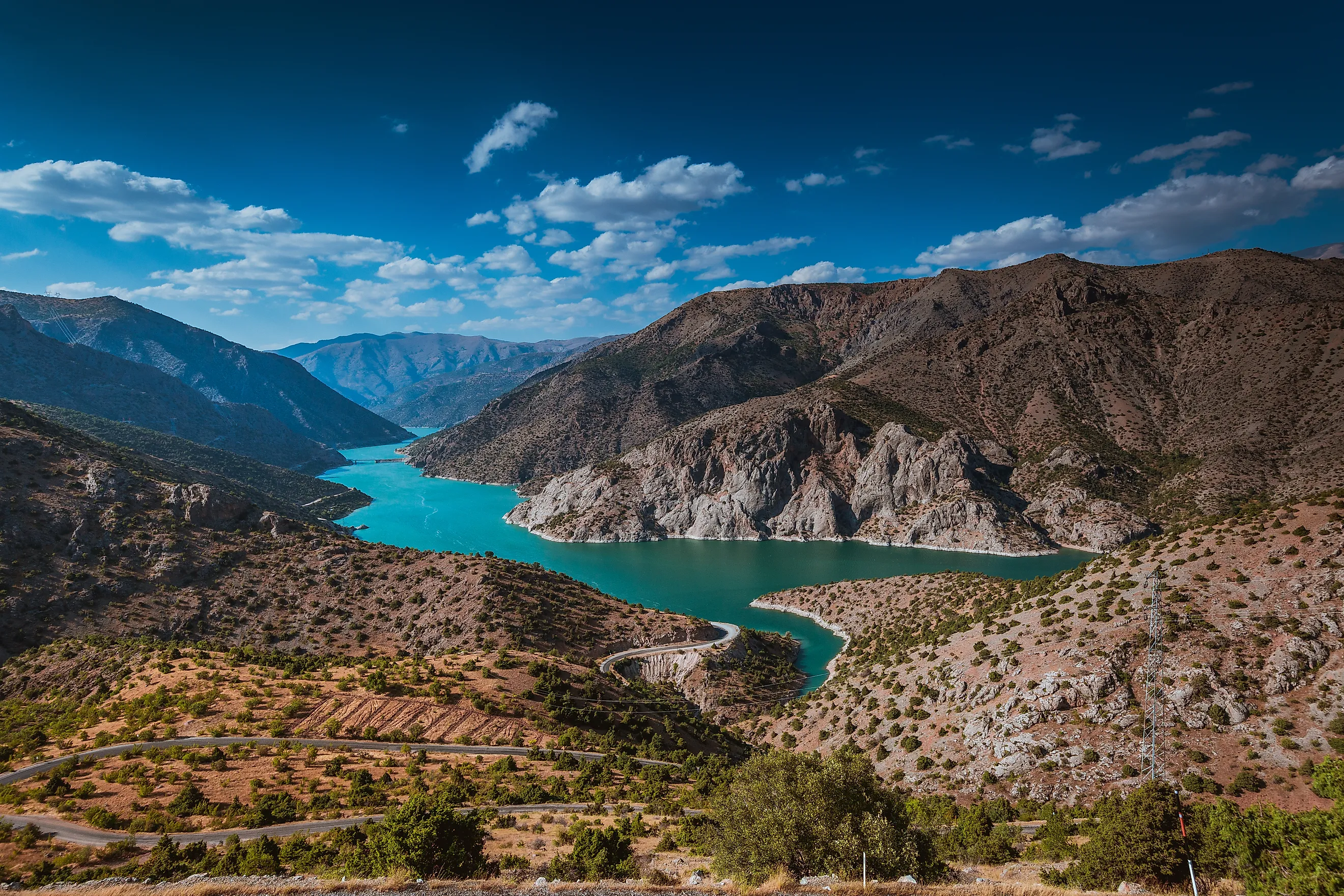
Major Rivers Of The Middle East
Rivers are defined as flowing freshwater bodies which move from a higher elevation to a lower elevation and eventually drain into oceans, seas, lakes, and reservoirs. Rivers serve as important sources of irrigation, drinking water, navigation, hydroelectric power generation, and various recreational activities like swimming and boating.
Covering an area of 7,207,575 km2, the Middle East is a geographical region that is mainly located in Western Asia and also includes parts of North Africa and southeastern Europe. Numerous small and large rivers flow through the Middle East region. This article highlights some of the major rivers of the Middle East.
Contents:
Tigris River
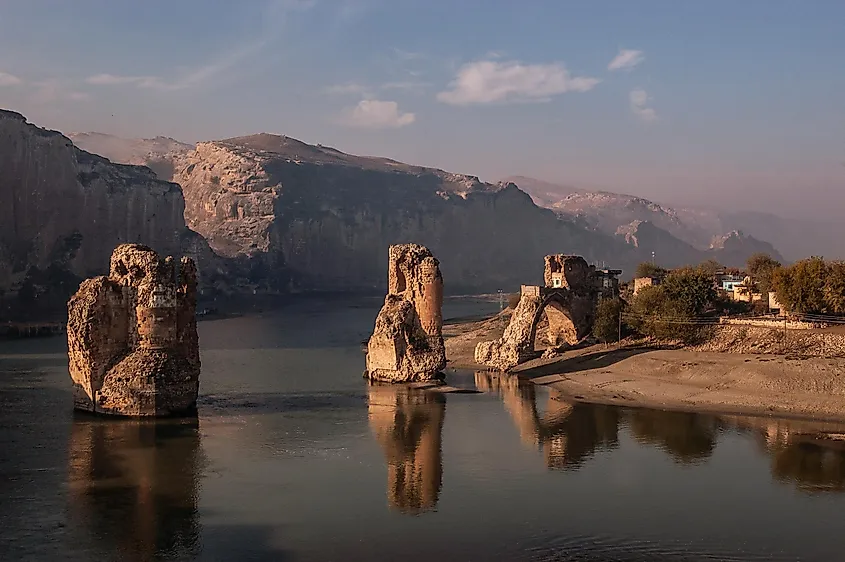
The Tigris River has a length of about 1,900 km and is the second-longest river in Western Asia. It originates from Lake Hazar in the Taurus Mountains in eastern Turkey and then flows southeastwards through the parts of Syria and Iraq. Some of the significant small tributaries of the Tigris River include the Batman River, Lesser Zab, Greater Zab, Garzan, Diyala, Cizre, Al-Adhaim, and Khabur rivers. The Tigris flows parallelly with the Euphrates River and along with all their tributaries form the large Tigris-Euphrates river system. Through its course, the Tigris River splits into numerous channels such as the Shatt al-Hayy, Shatt al-Muminah, Majar al-Kabir, Al-Kahla, Al-Musharrah, and Al-Kassarah. In the southeastern part of Iraq at the town of Al-Qurnah, the Tigris merges with the Euphrates to form the Shatt-al-Arab, which then drains into the Persian Gulf.
The Tigris River serves as an important navigational waterway in these desert countries. Some of the major cities that are located along the Tigris river include Baghdad, Basra, Mosul, and Diyarbakir. The Tigris river has been heavily dammed to provide water for irrigation, for generating hydroelectricity, and also for averting floods. The 3.4 km long Mosul Dam is Iraq’s largest dam constructed on the Tigris River.
Euphrates River
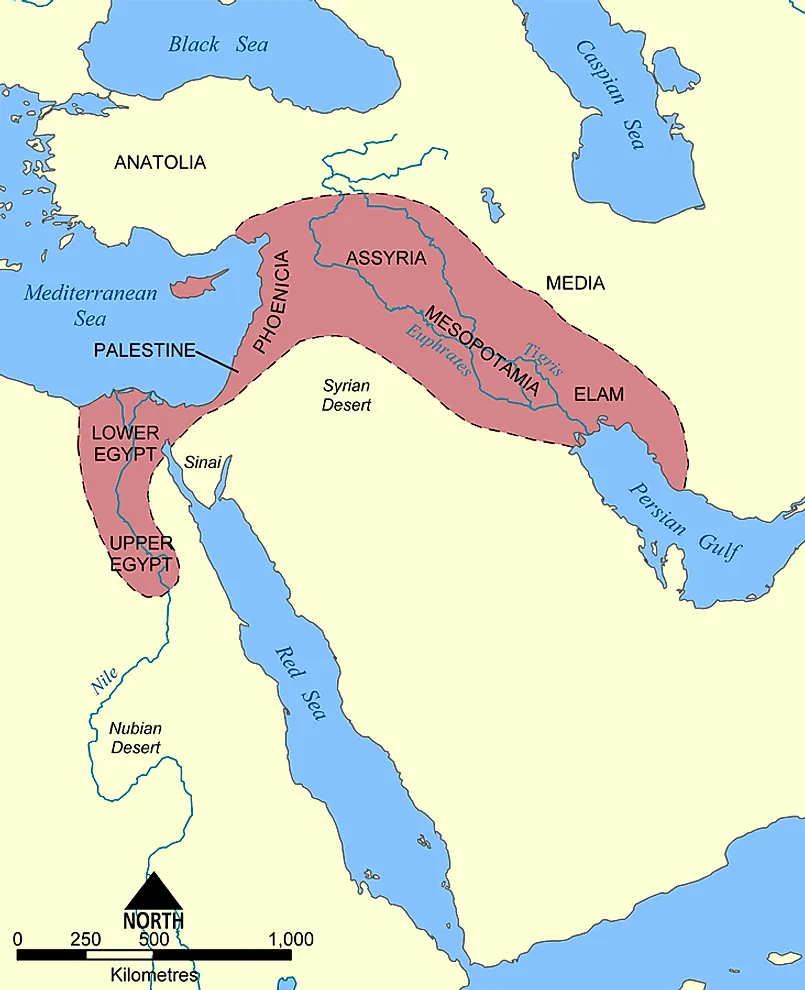
The Euphrates River has a length of about 2,800 km and is considered the longest river in Western Asia. The river rises at the confluence of the Western Euphrates (Kara Su) and the Eastern Euphrates (Murat Su) in the Armenian Highlands of southeastern Turkey. It descends between the mountain ranges of the Taurus Mountains to the Syrian Plateau and then flows through the western and central portions of Iraq. Some of the significant small tributaries of the Euphrates River include the Balikh, Sajur, and Khabur rivers. As the location of the fertile crescent, the Tigris-Euphrates river valley served as a cradle of the ancient civilizations of Babylonia, Mesopotamia, Assyria, and Sumer. The Euphrates River merges with the Tigris River to form the Shatt al-Arab in the southeastern part of Iraq, which then empties into the Persian Gulf.
About 34 species of Cyprinid fishes are found in the Tigris-Euphrates river basin. The endangered Euphrates soft-shelled turtle is endemic to the Euphrates-Tigris River basin. Some major dams and reservoirs that have been constructed on the Euphrates river include the Hindiya Barrage, Ramadi Barrage, Haditha Dam, Tabqa Dam, Keban Dam, Baath Dam, and Tishrin Dam. Both the Tigris and the Euphrates Rivers have been a cause of serious political tension between the countries of Turkey, Iraq, and Syria for assuming control over the river waters for irrigation and hydropower generation.
Nile River
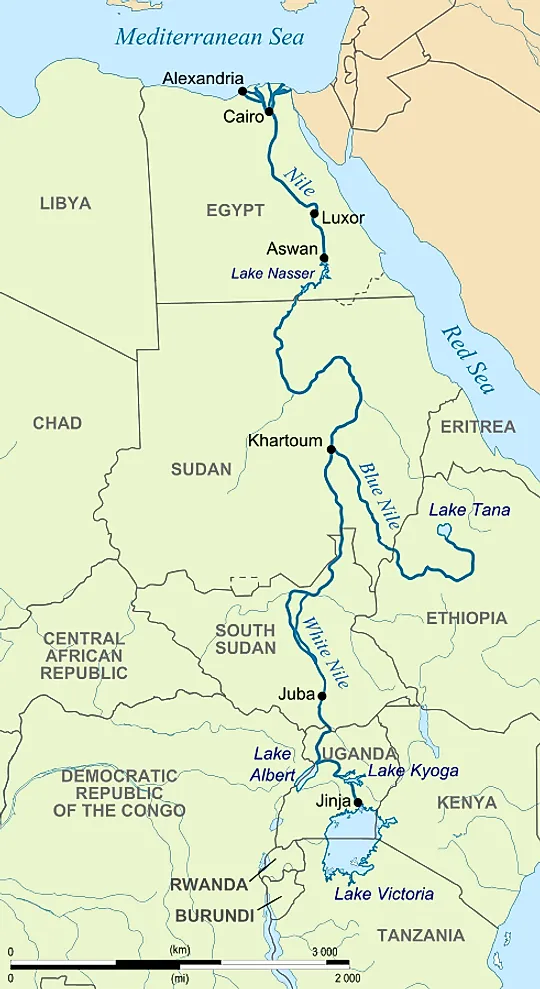
The Nile River has a length of about 6,650 km, making it the longest river in Africa and possibly on the planet, though some research suggests the Amazon River is slightly longer. Because it drains in Egypt, it can be considered to be a majr river of the Middle East, although most of it occupies Africa. The river originates in the African Great Lakes region and flows in the northward direction through the northeastern part of Africa, eventually emptying via a large delta into the Mediterranean Sea. This long river drains an area of more than 3,254,555 km2 and passes through or borders the African nations of Burundi, Rwanda, Tanzania, Kenya, the Democratic Republic of the Congo, Uganda, South Sudan, Republic of Sudan, Ethiopia, Eritrea, and Egypt. The river serves as the main source of water for the countries of Egypt and the Republic of Sudan. There are two main tributaries of the Nile River: the White Nile and the Blue Nile. The Greek historian Herodotus nicknamed Egypt “the Gift of the River Nile,” as the Nile River served as the lifeline of the ancient Egyptian civilization. Some of the major cities situated along the river Nile include Cairo, Khartoum, Juba, and Jinja.
Jordan River
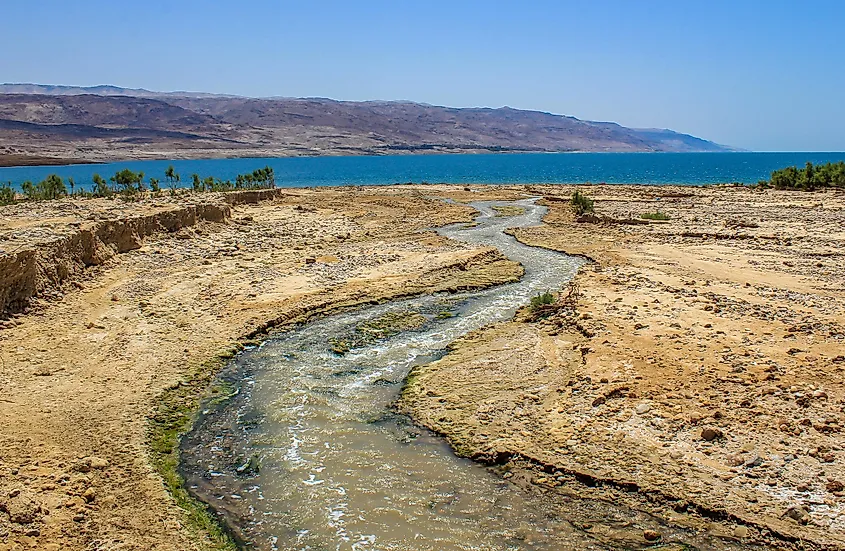
The Jordan River has a total length of about 360 km, but because of its meandering path, it spans 124 km from mouth to tip. This river originates in Mount Hermon at the boundary between Lebanon and Syria. It then flows southwards through the northern part of Israel to the Sea of Galilee. From the sea, it again flows southwards and divides Israel and the Palestinian West Bank from the Kingdom of Jordan and the Golan Heights. It then finally empties into the Dead Sea. Some of the important tributaries of the Jordan River include the Bāniyās, Dan, Yarmouk, Hasbani, Iyyon, and Zarqa rivers.
Amu Darya River
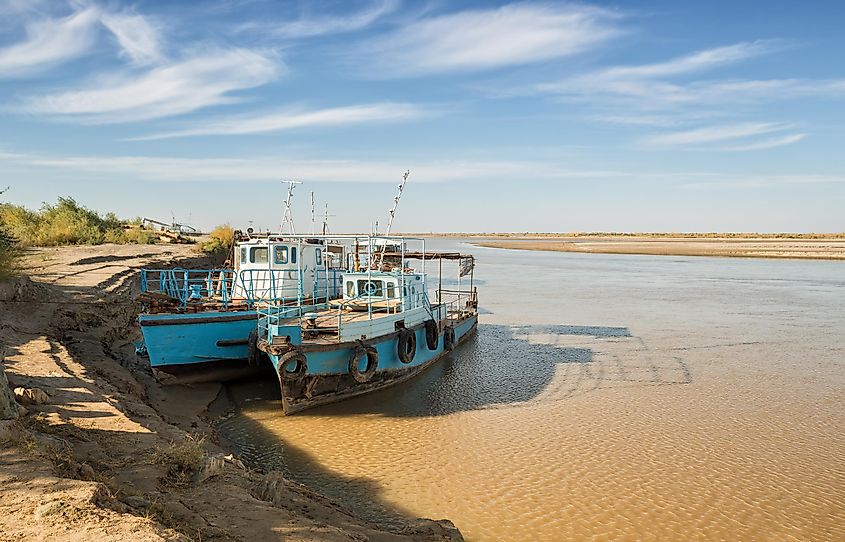
The Amu Darya River has a length of 2,620 km and is considered the largest river in Central Asia. This transboundary river rises at the confluence of the Panj and Vakhsh rivers in a high plateau in the Pamir Mountains. The river flows across southern Tajikistan along the Afghanistan-Tajikistan border and continues in the northwestward direction forming parts of Afghanistan’s border with Turkmenistan and Uzbekistan. It then ultimately drains into the Aral Sea. Some of the major tributaries of the Amu Darya River include Panj, Vakhsh, Sherabad, Surkhan Darya, Zeravshan Rivers.










